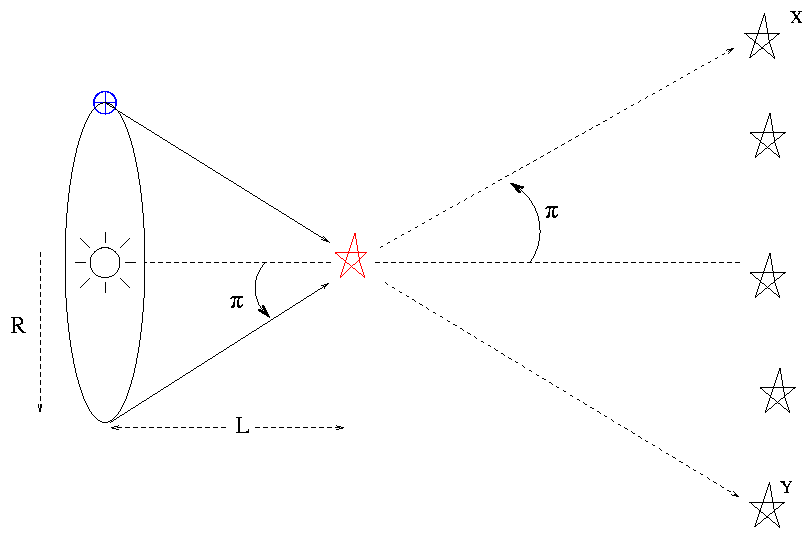
 Copyright © Michael Richmond.
This work is licensed under a Creative Commons License.
Copyright © Michael Richmond.
This work is licensed under a Creative Commons License.
Contents
The basic idea of parallax is that, if you observe a nearby object from different locations, you'll see it appear to shift relative to more distant object.

Try it with your thumb!
The orbit of the Earth around the Sun gives us a baseline of 1 Astronomical Unit. Astronomers have decided to make that the basis for a unit of distance: the parsec is the distance at which a star would shift its position by one arcsecond; in other words, have a parallax of one arcsecond.
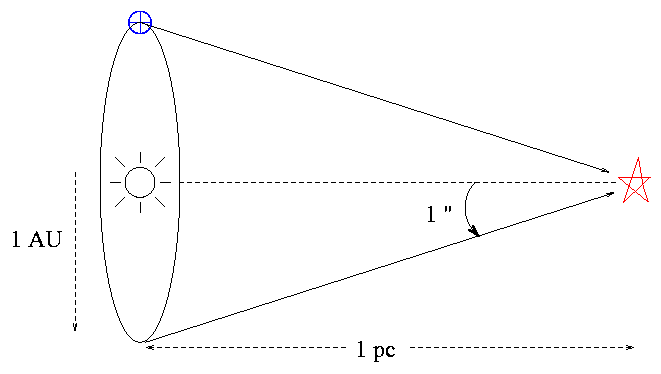
Back in the early 1990s, a European satellite called Hipparcos spent three years measuring the positions of hundreds of thousands of stars, over and over and over again. It made some of the best ever measurements of parallax in the optical portion of the spectrum. Here's an example: measurements of the position of Vega.
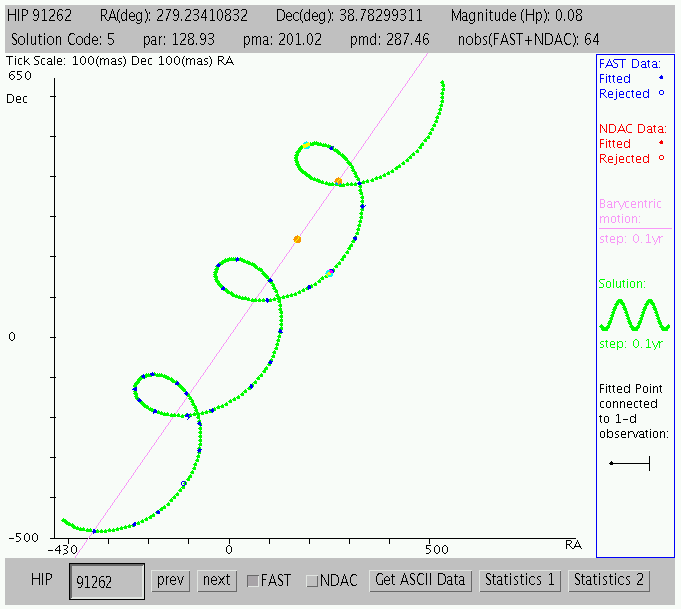
Can you figure out how far away Vega is from the Earth?
The individual measurements from Hipparcos have uncertainties of about 1 milliarcsecond = 0.001 arcseconds. How far out could we see parallax due to the Earth's orbit (to a rough approximation)?
In recent years, astronomers have started to use arrays of radio telescopes to make VERY precise measurements of the positions of objects in giant molecular clouds. These objects are the nurseries of our galaxy, where new stars are forming. By combining the signals from several radio dishes in the proper manner, astronomers can measure positions more precisely than they can with optical telescopes.
For an illustration of parallax determined from radio observations, see a short summary of recent results from the VERA collaboration.
How small are the angles measured with radio interferometry? How far out could we see parallax due to the Earth's orbit (to a rough approximation)?
For most of their lives, stars fuse hydrogen into helium deep inside their cores. As long as a star is fusing hydrogen to helium, the war between gravity (pulling inwards) and radiation pressure (pushing outwards) stalls in a relatively simple manner. It turns out that there is a nice relationship between the mass of a star and its temperature, size and luminosity.
You can see all of this at once if you look at a color-magnitude diagram.
Watch a single star evolve on HR diagram
Watch many stars in a cluster evolve
Your job: find the approximate age and distance of this cluster, called 47 Tuc:
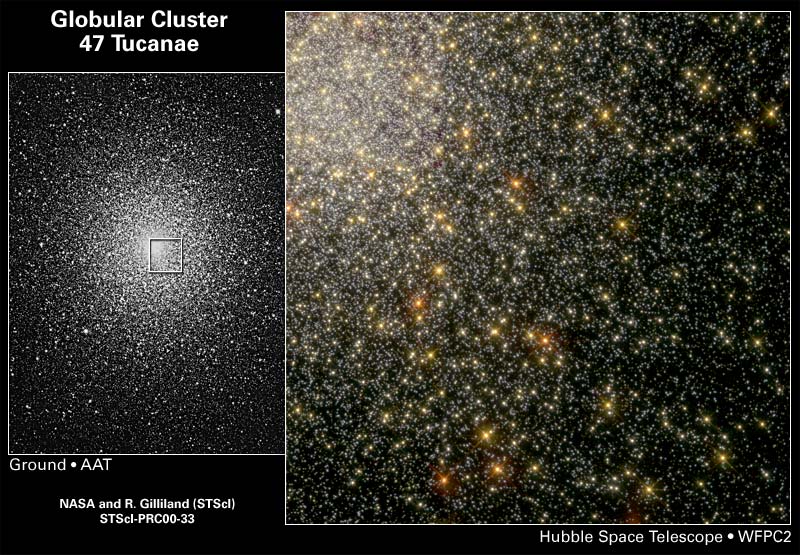
Here's the observed color-magnitude diagram of stars in this cluster:

And here is a color-magnitude diagram of stars from a series of models:
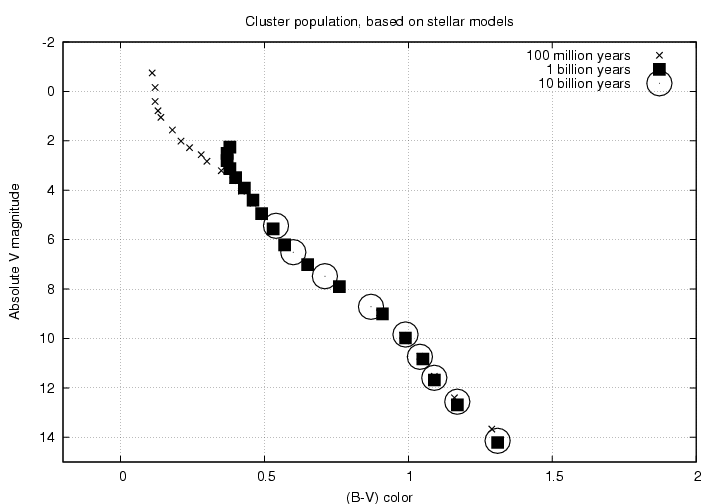
Use the main-sequence turn-off point from the observed cluster to figure out

 Copyright © Michael Richmond.
This work is licensed under a Creative Commons License.
Copyright © Michael Richmond.
This work is licensed under a Creative Commons License.